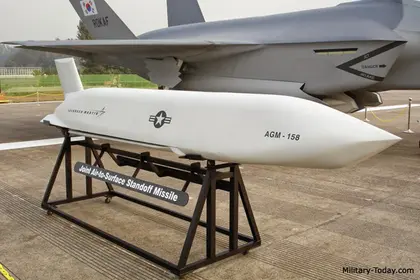The long-awaited arrival of a limited number of the 1997-issue version of America’s ATACMS ballistic missile system has provided a dramatic upgrade to Ukraine’s ability to repel Russia’s invasion forces. Armed with cluster munitions, a few ATACMS launched in the last week were able to inflict severe damage on several Russian airfields, destroying a significant number of military aircraft caught out in the open.
Contrary to much previous hand-wringing, the attacks to did not provoke any dramatic escalation from Russia, which is already doing all it can to try to wreck Ukraine. Many more ATACMS should be sent to Ukraine, so that their use can be become systematic and radically expanded.
JOIN US ON TELEGRAM
Follow our coverage of the war on the @Kyivpost_official.
But there is another target that Ukraine needs to take out to limit Russia’s continued ability to cause devastation and carnage. That target is the Kerch Strait Bridge, which provides a key route for Russia to use to send weapons, ammunition, and other supplies to its forces in Crimea. Ukrainian forces advancing on the southern front are now closing in on Tokmak, and will soon have the ability to cut the land corridor linking the Russian mainland to Crimea.
If the Kerch Strait Bridge can be destroyed as well, the Kremlin’s occupation forces in Crimea would be cut off. Then, like Cornwallis’s army trapped in the Yorktown peninsula, they could eventually be forced to surrender, effectively deciding the war.

Zelensky Meets CIA Director William Burns in Ukraine
Unfortunately, while excellent for taking out soft targets like aircraft parked in the open, the cluster bomb tipped M39A1 variant of the MGM-140 ATACMS employed recently by Ukraine are not good weapons for destroying the bridge. But the United States possess large numbers of another munition system that would be perfect for such a heavy demolition job. This is the AGM-158 Joint Air-to-Surface Standoff Missile, or JASSM.
JASSMs are standoff weapons that allow aircraft to hit hardened targets hundreds of kilometers away
JASSMs are stealthy, air-launched cruise missiles that can be carried and fired from a multitude of aircraft types. Current JASSM launch platforms are extremely diverse, and include the F-15E, F-16, F-18, F-35, B-52, B-1, B-2... Ukraine’s current airplanes could readily be adapted to launch them as well.
JASSMs deliver a 450 kg bunker penetrating warhead. Made by Lockheed Martin, the first generation JASSM went into service in 2009 with a range of 370 km. In 2014, the system was upgraded to give second generation JASSM a range of 920 km. Both have advanced technologies that allow them to penetrate enemy air defenses, and guidance systems that allow them to be both precisely targeted at heavily protected land installations and to deliver devastating blows to ships at sea. So, either could be launched by aircraft operating well behind Ukrainian lines to hit and destroy the Kerch Strait bridge or sink any Russian ships attempting to operate anywhere near Crimea.
JASSMs were first employed in combat by the US Air Force in April 2018, with 19 being sufficient to destroy the Assad regime’s chemical weapons complex. In October 2019, JASSMs were used again to eradicate the ISIS terrorist compound at Barisha.
Over 3,300 JASSMs have been delivered to the US Air Force, and hundreds more have been provided to Poland, Finland, Australia and Morocco. Additional units are currently being produced at a rate of 500 per year. So, there is no shortage of supply.
A hundred JASSMs could have a decisive impact on the course of the war. They should be delivered to Ukraine without further delay.
The views expressed in this opinion article are the author’s and not necessarily those of Kyiv Post.
Robert Zubrin is an American aerospace engineer. His newest book, The Case for Nukes: How We Can Beat Global Warming and Create a Free, Open, and Magnificent Future, was recently published by Polaris Books.
You can also highlight the text and press Ctrl + Enter






